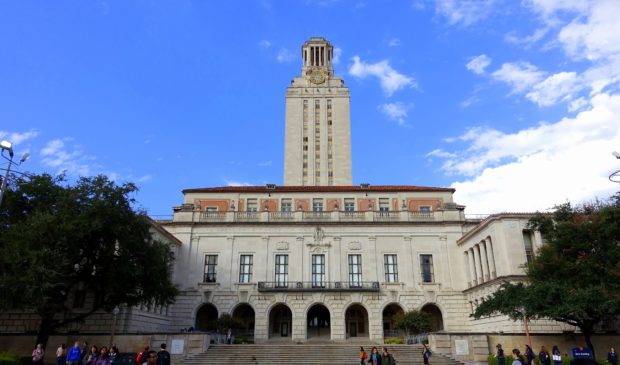Capital Metro attempts to reverse falling college student ridership
Monday, August 6, 2018 by
Ryan Young In a bid to get more college students to hop on the bus, the Capital Metropolitan Transportation Authority is making several changes to its subsidy agreements with the University of Texas at Austin and the Austin Community College system.
Both schools will transition to a flat annual fee to pay for transit service, and ACC students and staff will once again receive free fares.
Capital Metro operates the extensive UT shuttle system, which moves thousands of UT students and staff in and around the central campus area as well as to and from outlying student neighborhoods, such as the Riverside, Far West and Lake Austin communities. UT students and staff can also ride all other Capital Metro services for free.
As of May 2018, UT shuttle boardings stood at 13,432 per weekday, but shuttle ridership has fallen precipitously in recent years. In May 2015, that number was 22,110 boardings per weekday.
At Capital Metro’s July 30 board meeting, Chair Wade Cooper suggested that some of the shuttles’ decline stems from the construction of high-rise student housing in the West Campus neighborhood, which placed thousands of Longhorns within walking and biking distance of their classrooms.
“We’ve occasionally taken a beating for declining ridership, but some of that is a success story because of the different land use patterns and increased density on the west side of campus,” he said, “which has eliminated some of the UT ridership over the years.”
And Capital Metro has also replaced some UT shuttle routes with regular MetroBus service, most recently in the Cap Remap June service change, in which the Route 653 Red River shuttle was replaced by a more frequent Route 10.
But Dottie Watkins, Capital Metro’s vice president of bus operations, called the UT shuttle service “highly in-demand and very well-utilized.” She also said the university has been responsible for declining service over the years.
“One of the things that has happened over the course of the last 10 to 15 years is as the university has reached budget crunches, they have continued to ask for a decrease in service hours,” Watkins said.
According to Watkins, 10 years ago, Capital Metro provided 160,000 hours of UT shuttle service. But this year, the university will pay for just 90,000.
Currently, UT pays for the shuttles per service hour as well as per boarding. So, UT must pay more to run more shuttle service, and must also pay more if ridership increases. That means the university sometimes has a financial incentive to cut service – and keep ridership to a minimum.
So, starting in September, Capital Metro will charge UT a flat rate to keep the existing shuttle service levels. And instead of paying by the number of ID card swipes, the university will pay a predetermined ridership fee “based on current ridership and projections for just moderate ridership growth.”
Watkins hopes that with the policy changes, the university will increase its efforts to promote transit use.
“I believe we can gradually increase the ridership, especially with the use of our mainline services,” she said. “(The university) actually invited us to be a part of freshman orientation, so we’ve already started getting them before they even exactly know which dorm room they’ve got; we want to make sure they know how to ride the bus.”
Then there’s Austin Community College.
The Green Pass, which allows ACC students and staff to use all Capital Metro services, was free until September 2014. Then ACC began charging $25 per semester for one, which at the time was thought to be “still an excellent bargain.” (In 2014, an unsubsidized Capital Metro commuter pass cost $77 each month.)
And yet, ACC ridership dropped like a rock – by about half, according to a presentation produced by Capital Metro. Although the entire Capital Metro system has been in decline overall, the drop in Green Pass use was much more dramatic, and clearly began after the imposition of the $25 fee. Currently, Green Pass holders make up less than 5 percent of ACC’s total student enrollment.
In response, Capital Metro and ACC agreed to negotiate a new interlocal agreement that will restore the free Green Pass. And like the new agreement with UT, it will move ACC to a flat annual fee for transit service, which has been set at $429,000 with future increases tied to the producer price index. The presentation also mentions that the “new” Green Pass could be available as a digital pass on Capital Metro’s mobile app.
Capital Metro’s board approved both new interlocal agreements at the July 30 meeting.
Photo by Daderot [CC0], from Wikimedia Commons.
The Austin Monitor’s work is made possible by donations from the community. Though our reporting covers donors from time to time, we are careful to keep business and editorial efforts separate while maintaining transparency. A complete list of donors is available here, and our code of ethics is explained here.
You're a community leader
And we’re honored you look to us for serious, in-depth news. You know a strong community needs local and dedicated watchdog reporting. We’re here for you and that won’t change. Now will you take the powerful next step and support our nonprofit news organization?



